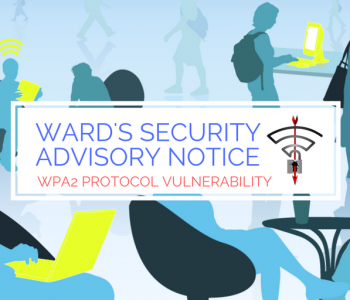 Careers
Careers
I love that rainbow flag momma!

Sharon Walsh, Enterprise Account Manager
“I love that rainbow flag Momma” came the chirpy little voice of my 5-year-old son from behind me in his car seat on our morning drive to playschool. Head tilted, admiring the flag in front of the secondary school on our route. “Me too Ben” I reply. Then the question “What’s it for? Which country?, “Oh, it’s not for any country Ben” I reply ”Its, eh…it stands for equality…you know, that everybody is equal and we all deserve to be treated fairly”. “Haha that’s funny Momma, I just like the colours anyway”, His bemused little face quickly moving on to the next pressing topic of the day, why his bagel got more toasted on one side than the other!
Long after he had run off happily with his friends however his question was still swirling around my head, something about my answer really niggling and irritating me a few hours into my work day. He asked me a direct question, why did I not give him a direct answer? My internal chatter was now on overdrive, with the volume up. I didn’t lie, the flag does represent equality but it was not the answer to the question. The answer was ‘It’s the Gay Pride flag’. I’m a gay woman, married to another woman and since our two boys were babies we’ve told them the story of how they came to be, we’ve explained about all of the different family dynamics that exist and the fact that they have two Mums doesn’t cost them a thought. They are blissfully and beautifully unaware that our family dynamic might be considered unusual or different to others. So again, I wonder, why I answered him in a roundabout way earlier that morning. Like a politician swerving the actual question. Giving a bland and ‘safe’ answer. And I realised eventually that it’s a habit that I’ve become so adept at over the years that I don’t even realise I’m doing it at times- circling around an answer, being vague, not correcting someone on their presumption- not lying but not always telling the truth.
I have not experienced a lot of homophobia in my life, at least not the aggressive sort. The odd leery comment in a bar or a jeer walking down the street if holding hands with someone. Nothing that has kept me awake at night luckily. I know not all gay people in this country are so fortunate and that horrendous abuse and hate crimes still go on sadly. Overall, though, Ireland has come a long way in the last 20 years, the vast majority of gay people can live their lives openly and freely without fear or prejudice, and I’m so grateful to those who have gone before me and paved the way. I am grateful to work for an organisation where diversity is valued and people are absolutely treated fairly and with respect. However, I do think, at least for me, that sometimes from a place of fear and self-preservation that you might not even be aware of, comes a mental toll you pay. That is in the unsaid. The younger me who didn’t exactly lie to my parents but didn’t tell the truth either. The me who didn’t correct the person who presumed I had a husband and not a wife. The me who swerved the work event where significant others were invited… I’m laughing internally at the level introspection that one little question this morning has caused for me! For me though, that moment of clarity…probably combined with that thing that happens as you get older where you don’t care as much about what anybody thinks has made me more conscious of the importance of being honest with yourself, of answering the question you’re asked. By not doing so, in ways that may even seem irrelevant, you are denying part of you and over a long period of time that causes wounds. Not lying is not the same as telling the truth.
So if you’ve managed to read this far without dying of boredom, well done and a reminder for all, not least myself this Pride month –
Be Proud. Be honest. Speak your truth. Be you!







